Ossie Clark and Celia Birtwell’s story is about unique chemistry. They were one of the first artistic couples in which a fashion designer and a fabric designer worked together to complement each other, from their first creations in 1965 until their separation in 1973.
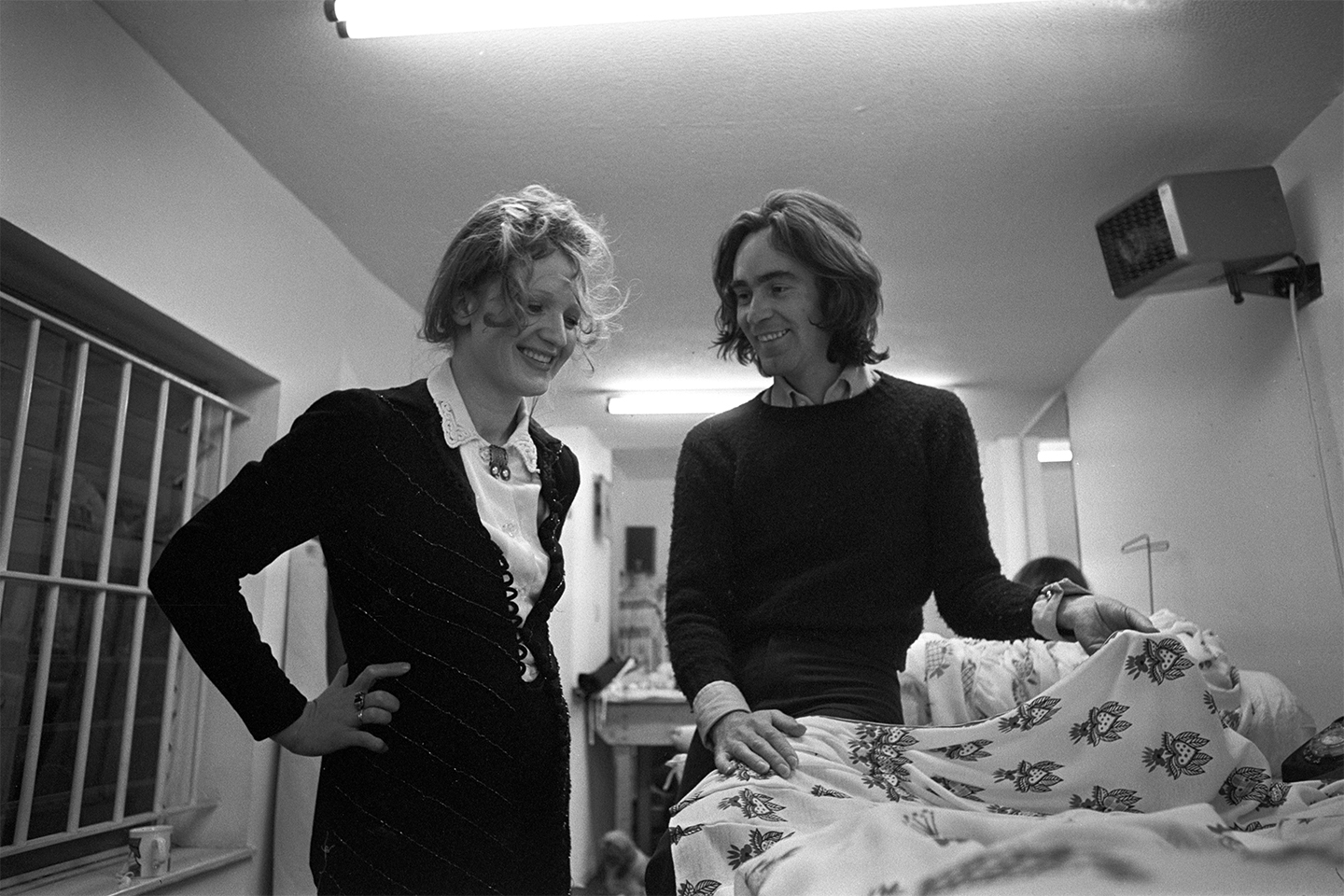
Ossie and Celia at work in their atelier at Quorum boutique, ca. 1972, Stanley Devon, The Sunday Times. This article was inspired by a visit to the exhibition “Mr & Mrs Clark. Ossie Clark and Celia Birtwell. Fashion and Prints 1965 - 1974”, curated by Federico Poletti, at the Sozzani Foundation in Milan
They were a couple in life and creativity in the period between Mary Quant’s miniskirts and the subversive punk movement of Malcolm McLaren and Vivienne Westwood. In the meantime, they also married and had two children.
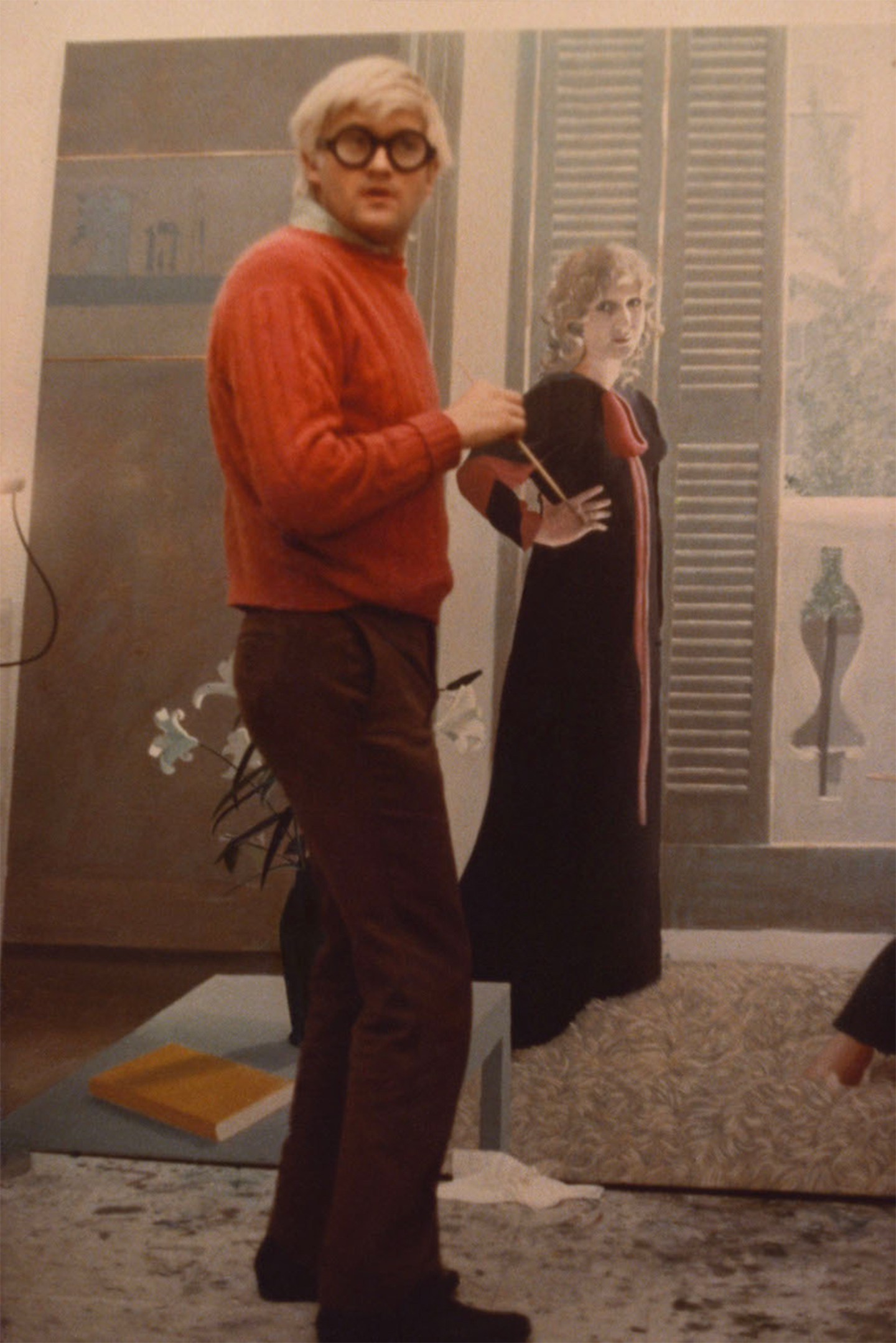
David Hockney painting Mr and Mrs Clark and Percy, 1971, photo by Peter Schlesinger
David Hockney’s 1970 painting “Mr and Mrs Clark and Percy” captures their timeless glamour as a couple. The nearly life-size portrait of them with their cat Blanche (despite their other cat Percy making a better name for the painting title) was painted in their flat in Notting Hill and is now exhibited permanently at the Tate.
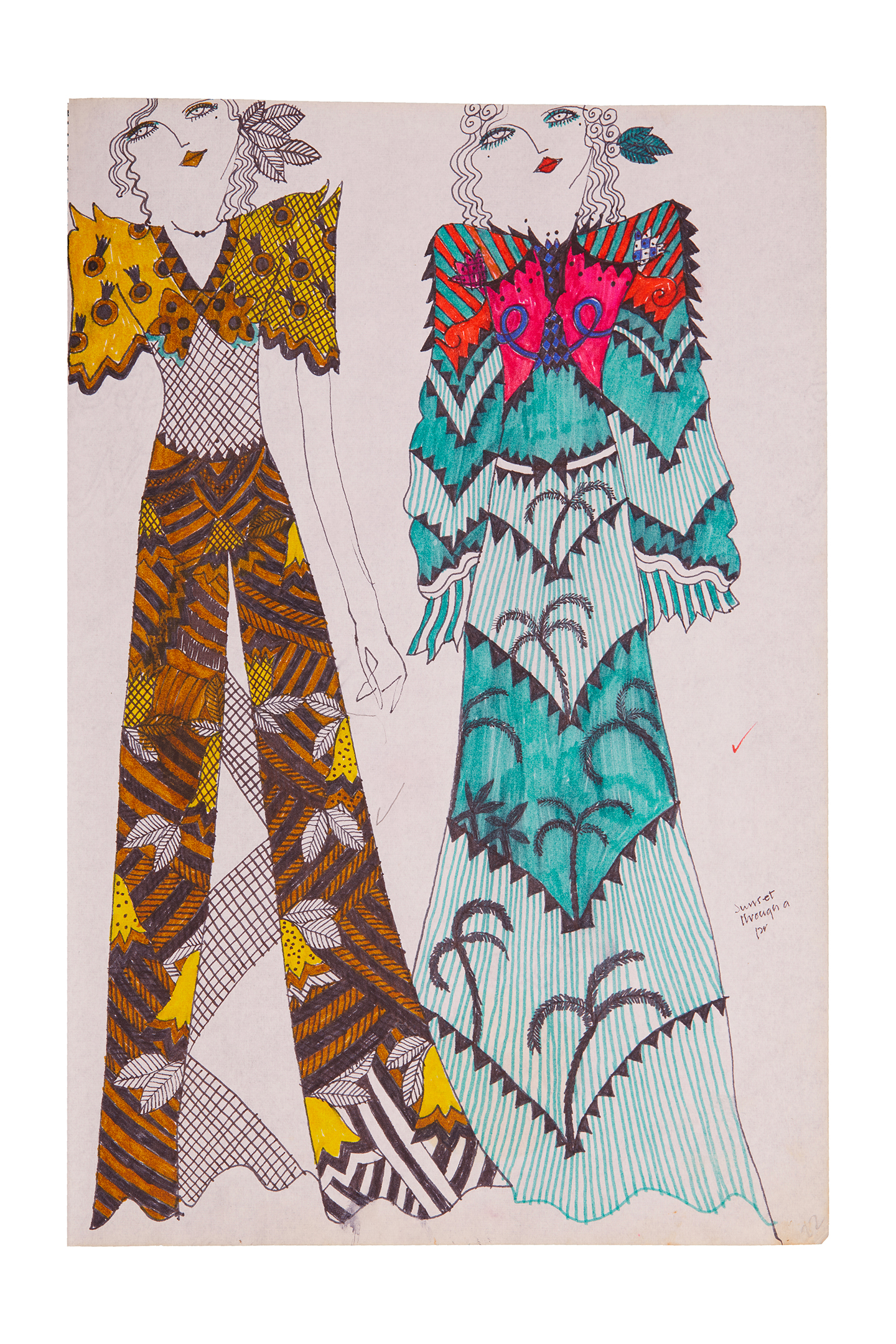
Celia sketchbook with some of her iconic designs and other patchworks of prints, 1968-70, Collection Celia Birtwell
Starting from the Royal College of Arts and seeking inspiration from observing the costume collection of the Victoria & Albert Museum, from Chelsea’s finest boutique to the Portobello Road counterculture scene, Mr & Mrs Clark have shaped the cultural fashion references of an entire generation.
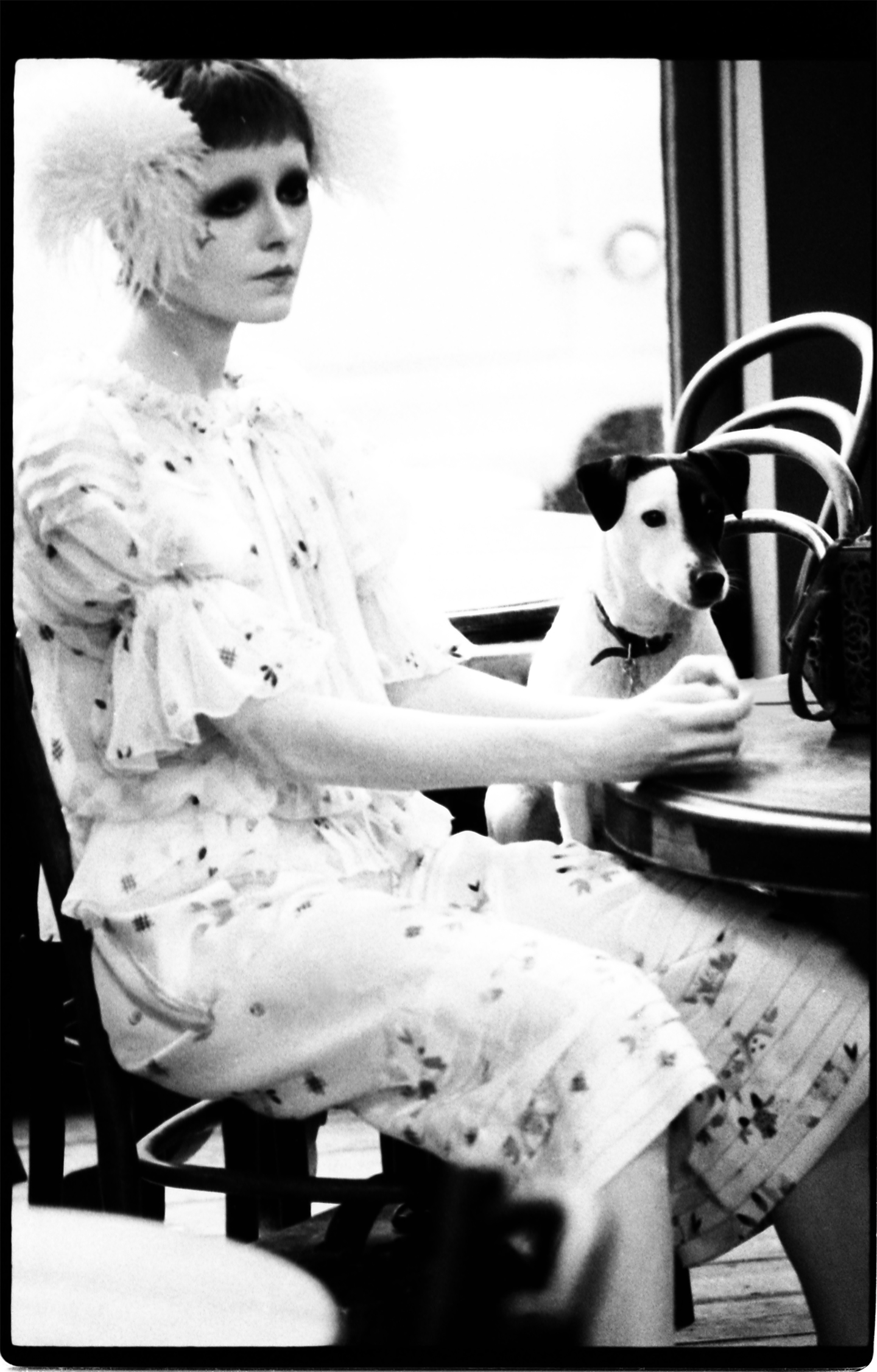
Sarah Moon, dress by Ossie Clark, Vogue Italy, June 1972
Two complementary identities
Raymond “Ossie” Clark and Clelia Birtwell met in London in the early Sixties. She was into designing patterns and obsessed with tapestry; he was more of a fashion designer type, interested in music and arts.
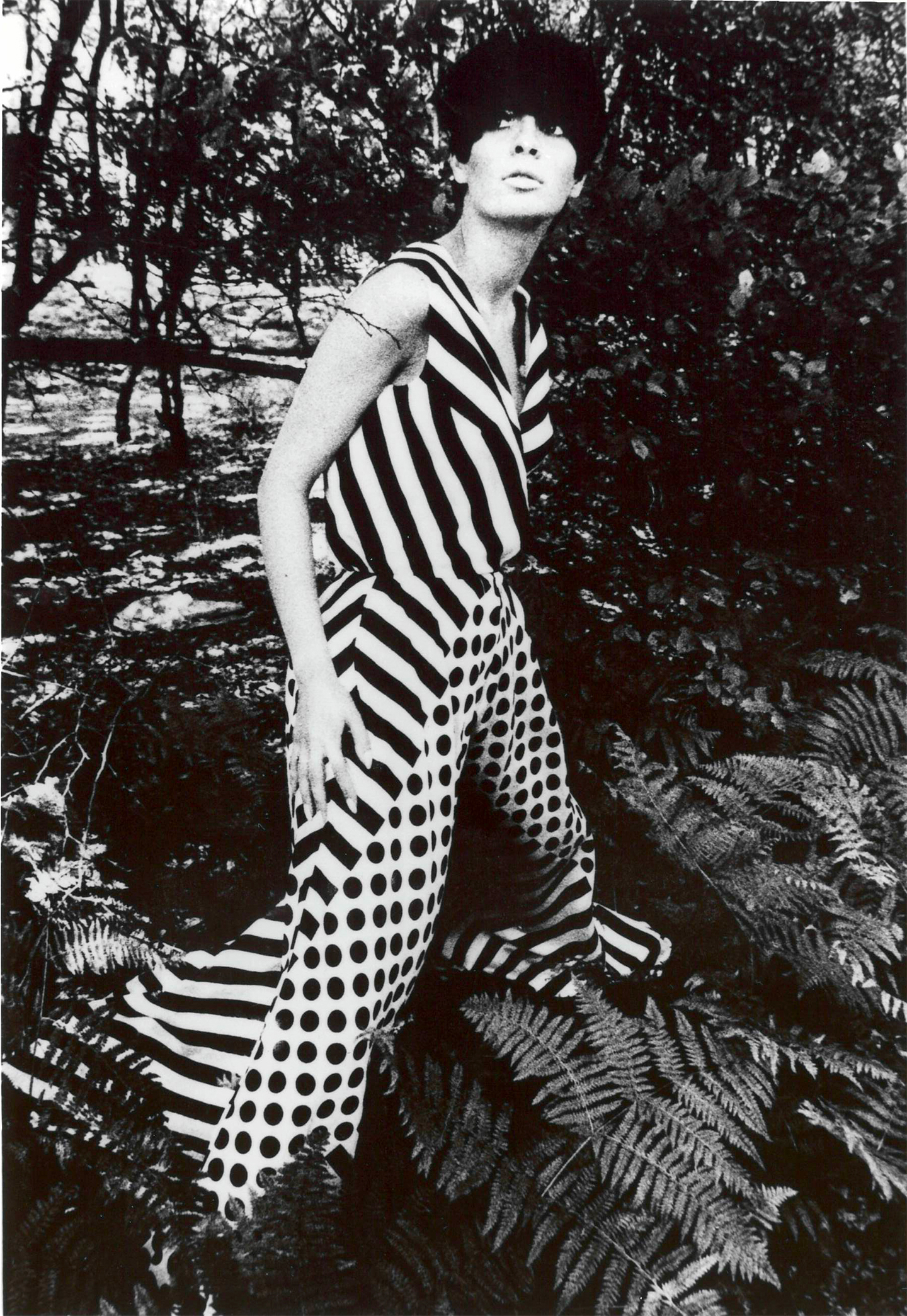
Model Jan de Souza wearing a silk Op art catsuit made when Ossie Clark was at Royal College of Art, 1965
He graduated from the Royal College of Arts in London and started designing clothes for boutiques.
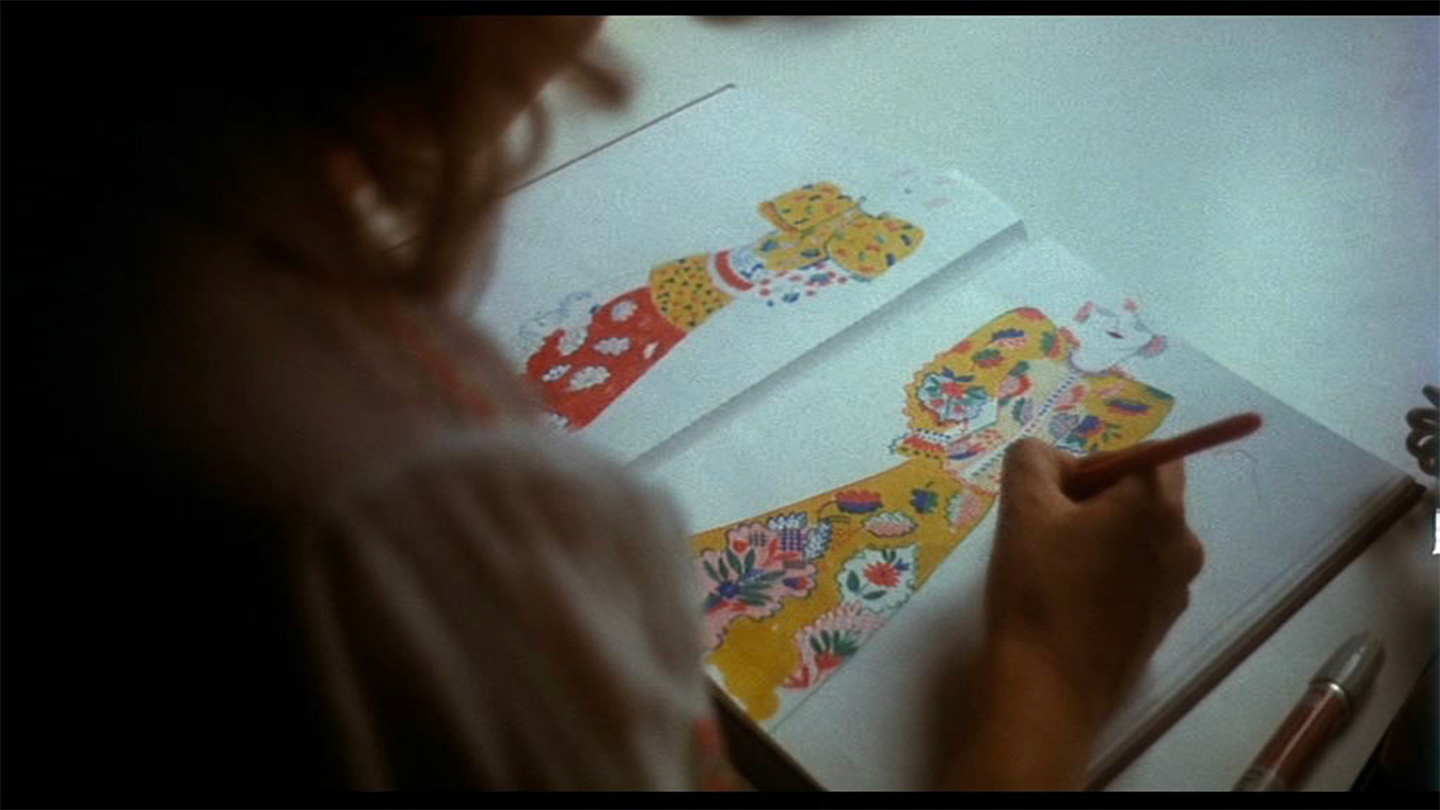
Celia working on her print in the film A Bigger Splash
She trained at the Salford Art School in Manchester and graduated in Textile Design at the Royal College of Art, then moved to London in the early 1960s, where he created the first Op-art style furnishing fabrics. In her prints, she nodded to the costumes of the Ballets Russes, medieval English tapestries, Cubism and Pointillism.
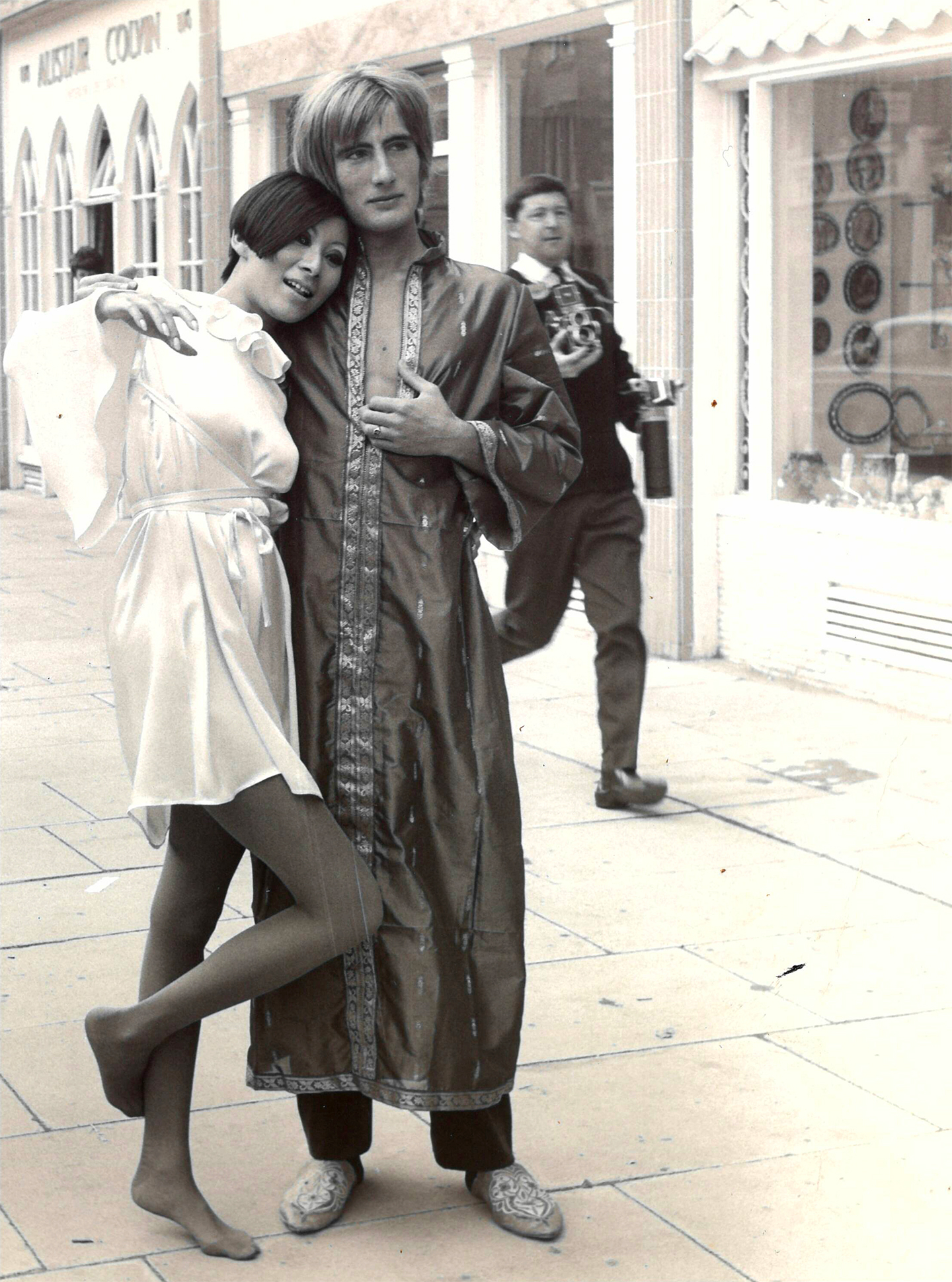
Models wearing Ossie Clark from English Boy models agency in Chelsea, around 1970s. English Boy was the most important model agency of the time, featuring talents like Marisa Berenson and Amanda Lear, just to name a few
Celia Birtwell created beautiful prints inspired by nature and different artistic currents that Ossie Clark, with his cutting and modelling skills, transformed into sensual and feminine dresses that conquered the international jet-set and music scene of the time. From Brigitte Bardot to Liz Taylor and Veruschka, many celebrities were captivated by his fashion.

From the left: Ossie, Gala Mitchell and another model in New York, ca. 1974
Still considered a trendsetter with his nude dresses, Ossie Clark was the first designer to rethink the idea of ‘occasion’ and to create eveningwear that could be worn during the day and vice versa. He was also the first to extend the concept of performance to fashion shows, offering them in a variety of venues, for example, at the Royal Court Theatre in 1971 with the musical contribution of David Gilmour, one of the founders of Pink Floyd.
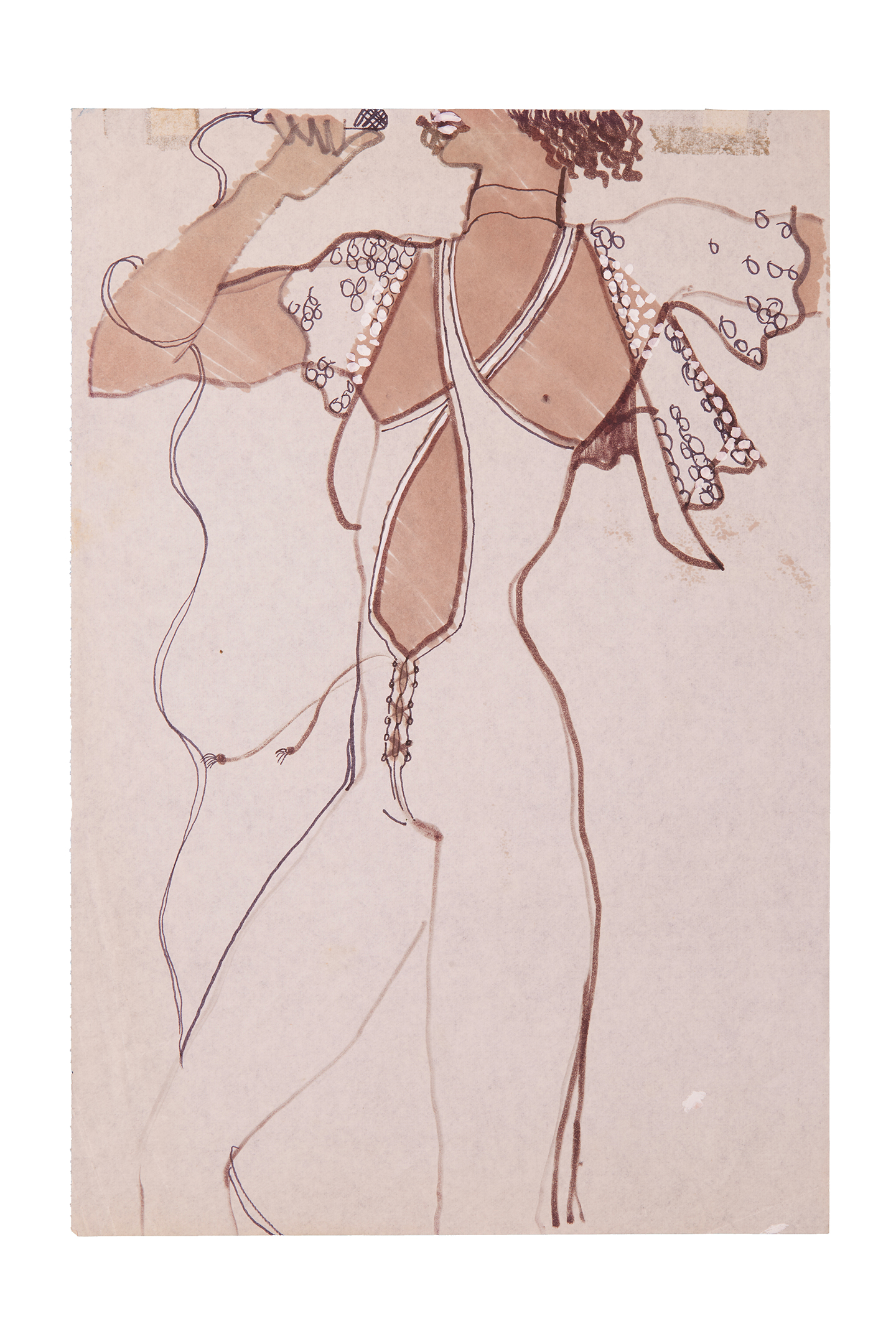
A design for Mick Jagger's white jumpsuite 1973
Their works have been featured in British Vogue and worn by supermodels such as Naomi Campbell and Kate Moss, dressed rockstars onstage like Mick Jagger and absolute icons like the Beatles.
Timeless avant-garde creations
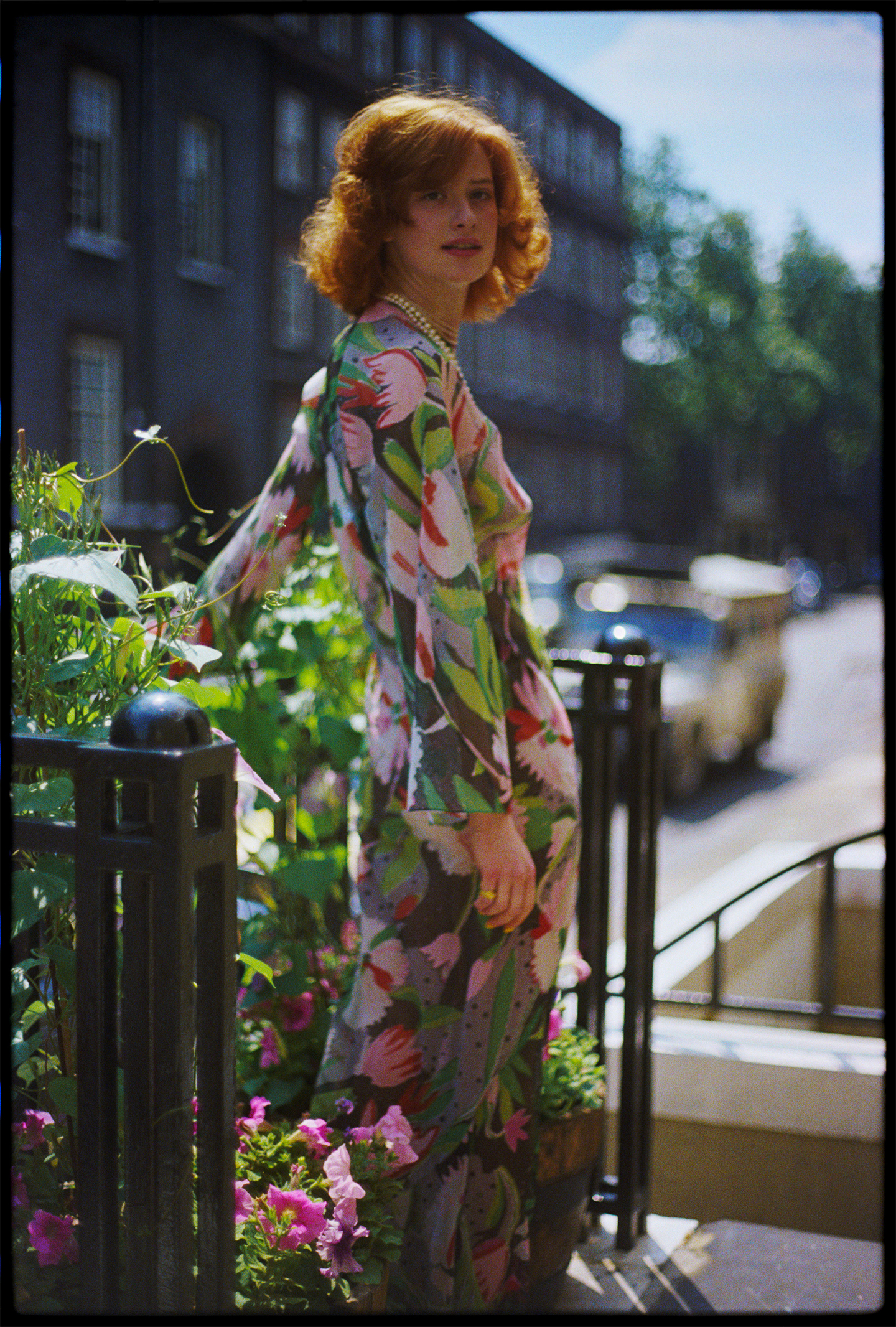
Nicky Waymouth wearing the Tulip print dress, photographed by Peter Schlesinger
While looking at their garments and observing every tiny detail that represents the work of these two talented artists up close, something magical happens. It’s impressive how modern and wearable the garments they created still look.
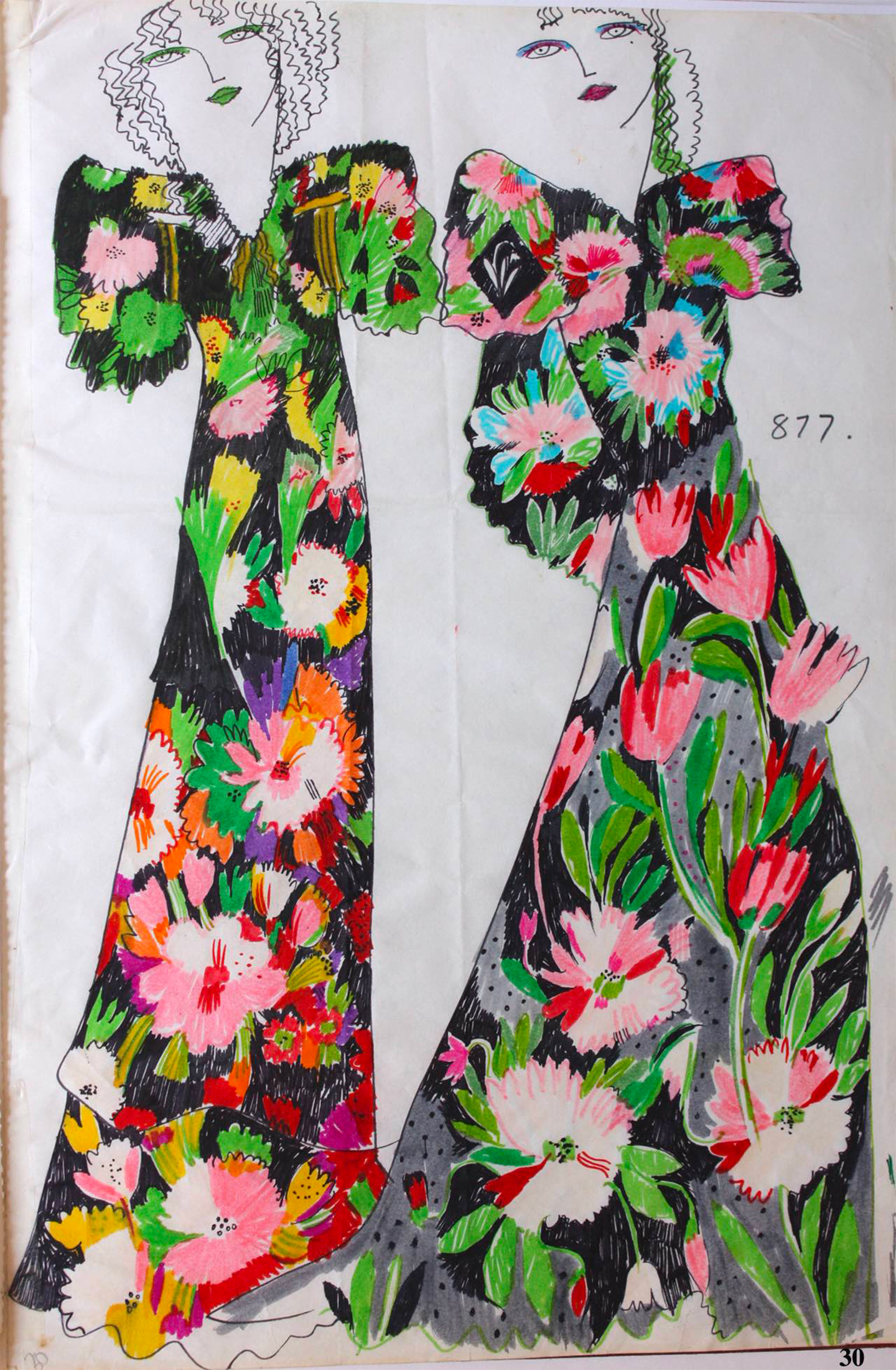
Celia Birtwell, Fashion drawing with Tulip prints, 1972. Pen and ink on paper, Collection Celia Birtwell
These timeless and fashionable creations celebrate the vibrant cultural and fashion scene that emerged in London during the swinging 60s, including Mary Quant’s mini skirt, Malcolm McLaren and Vivienne Westwood’s punk. According to fashion experts, Yves Saint Laurent’s 1966 “Le Smoking” could be inspired by the couple’s unique and visionary designs.
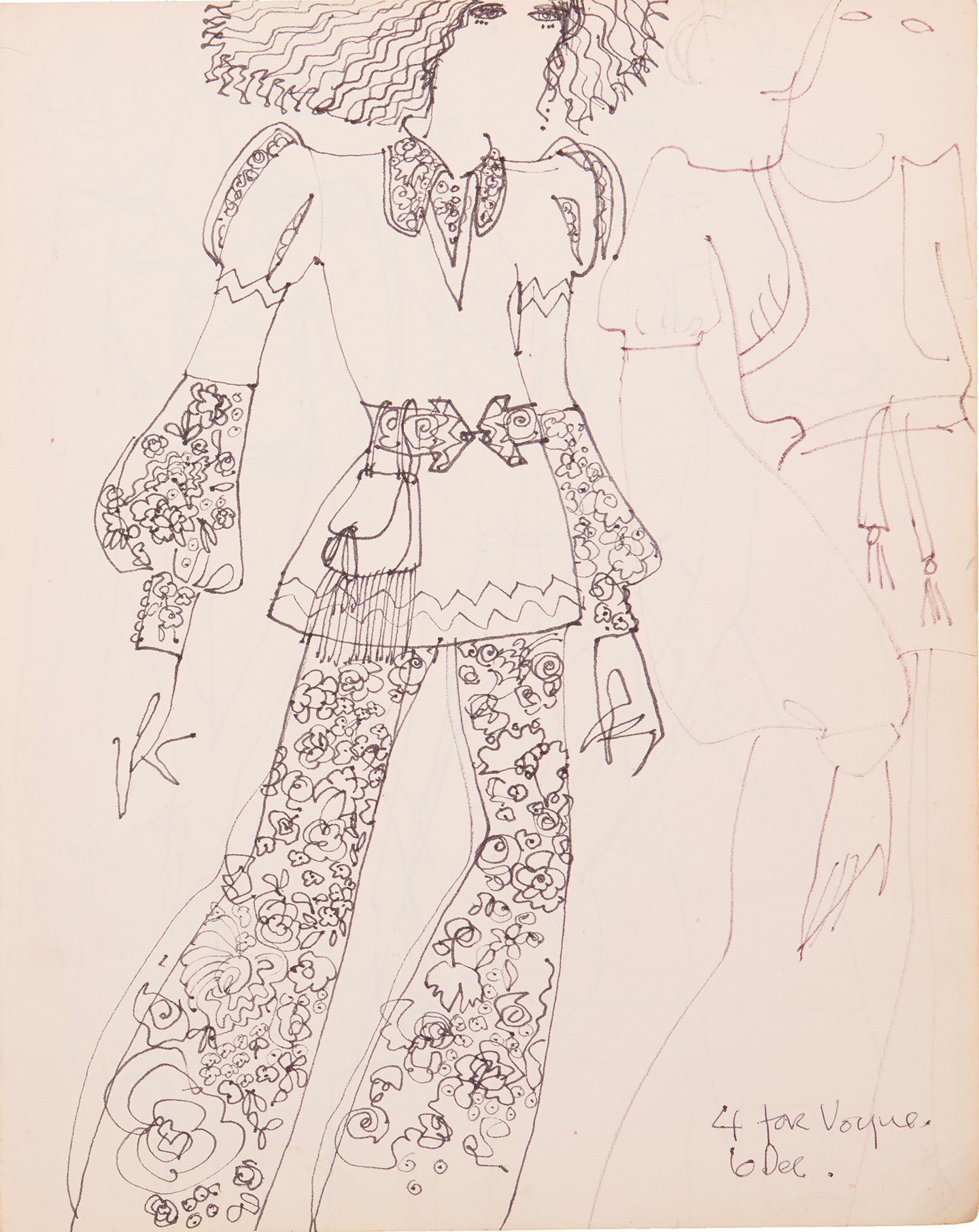
Ossie Clark Sketchbook, Fashion drawing for woman’s suit ca. 1968-69
The obvious care and research that the couple put into the prints and fabrics translate into garments so light and delicate that they seemed to follow the body line of the mannequins perfectly.
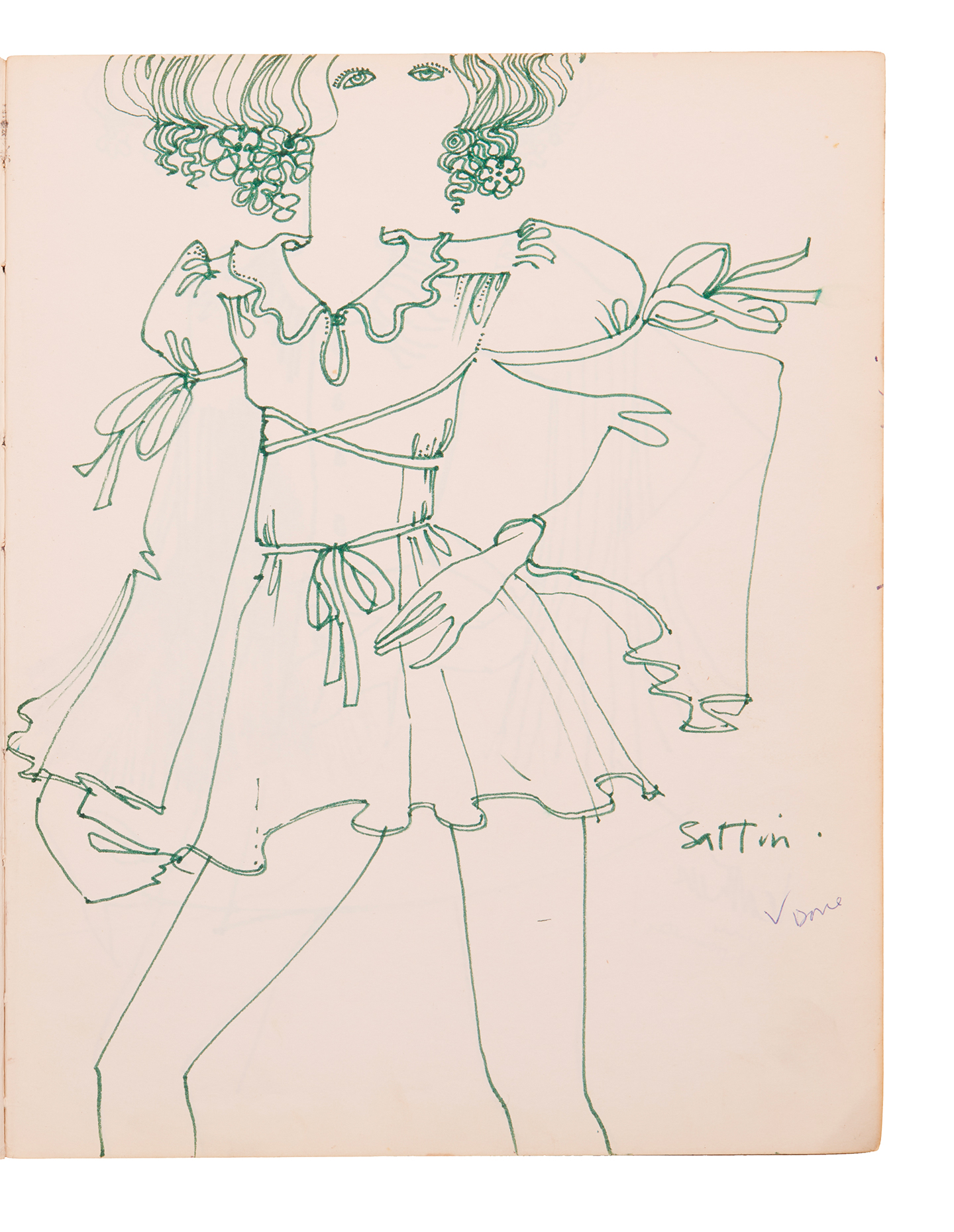
Ossie Clark, Sketchbook, Fashion drawing for a mini dress ca. 1968-69, Pen with green ink on paper
They are garments with character and manage to tell it through the colours of the prints and the play of transparencies that make it all very sensual. That can make you feel comfortable, independent and strong in wearing it. The power of clothes is precisely that: to make us feel good in our skin.
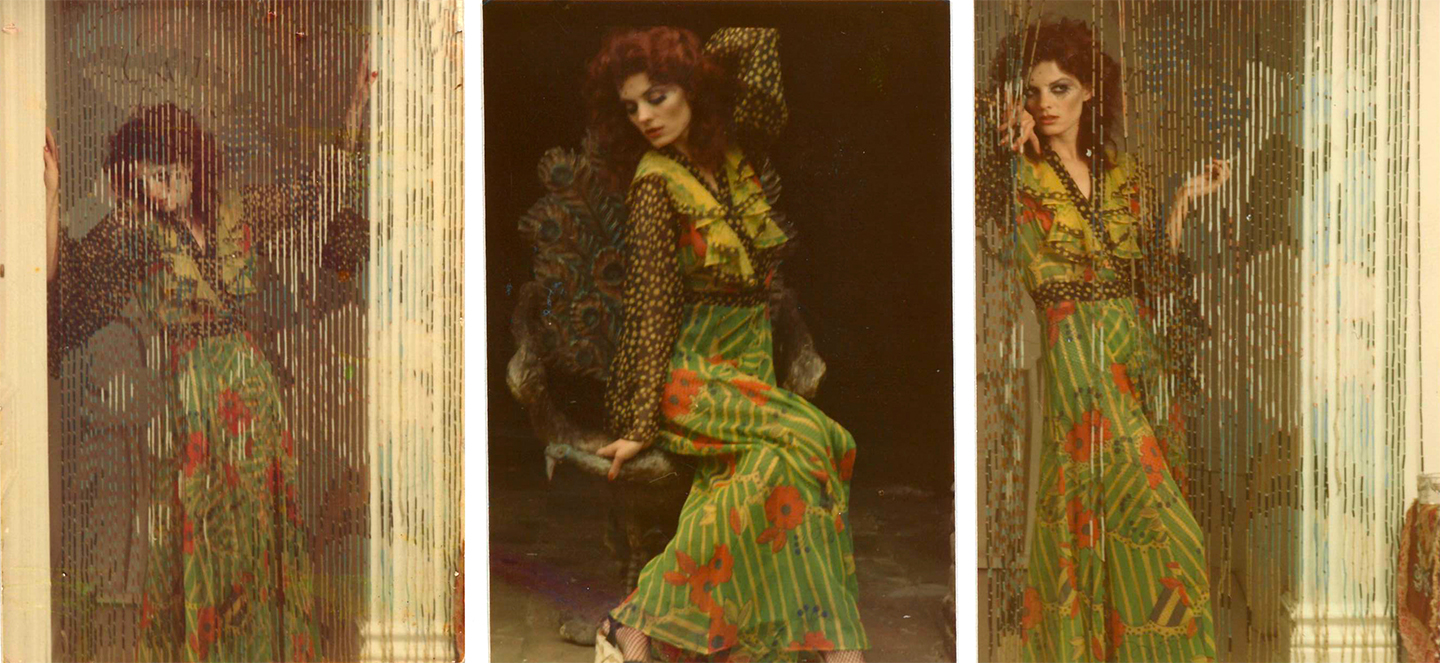
Gala Mitchell in Linden Gardens wearing “Acapulco Gold” chiffon dress photographed by Celia Birtwell, 1960s
The perks of being a couple (in fashion and life)
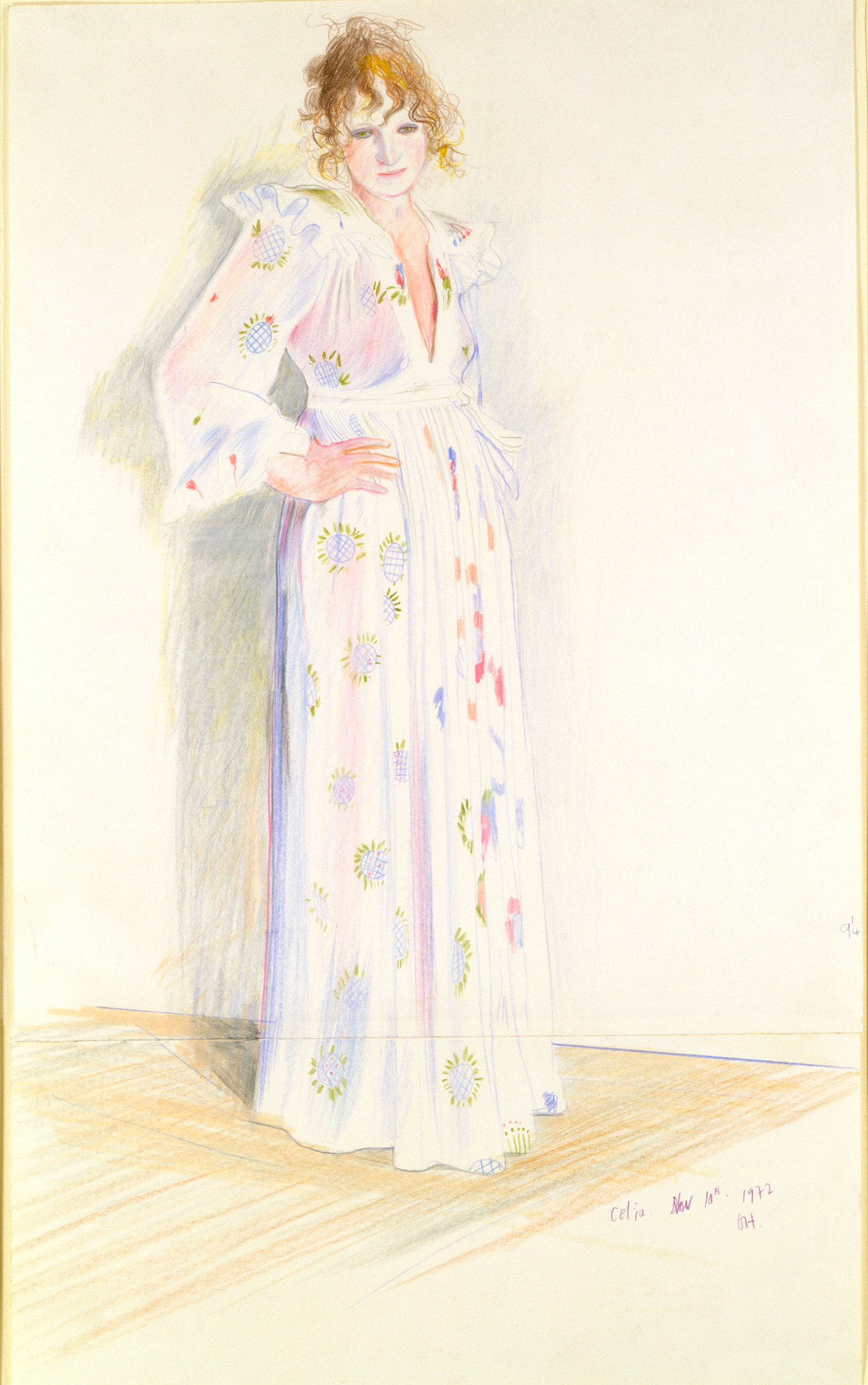
Portrait of Celia Birtwell by David Hockney, crayon on paper 1972
This incredible story speaks of the collaboration between two great artists who shared their creative careers. Collaboration can prove challenging, especially when it comes to striking a balance without overpowering the other and being open to new proposals, changes, and compromises. They managed to create something innovative by working together.
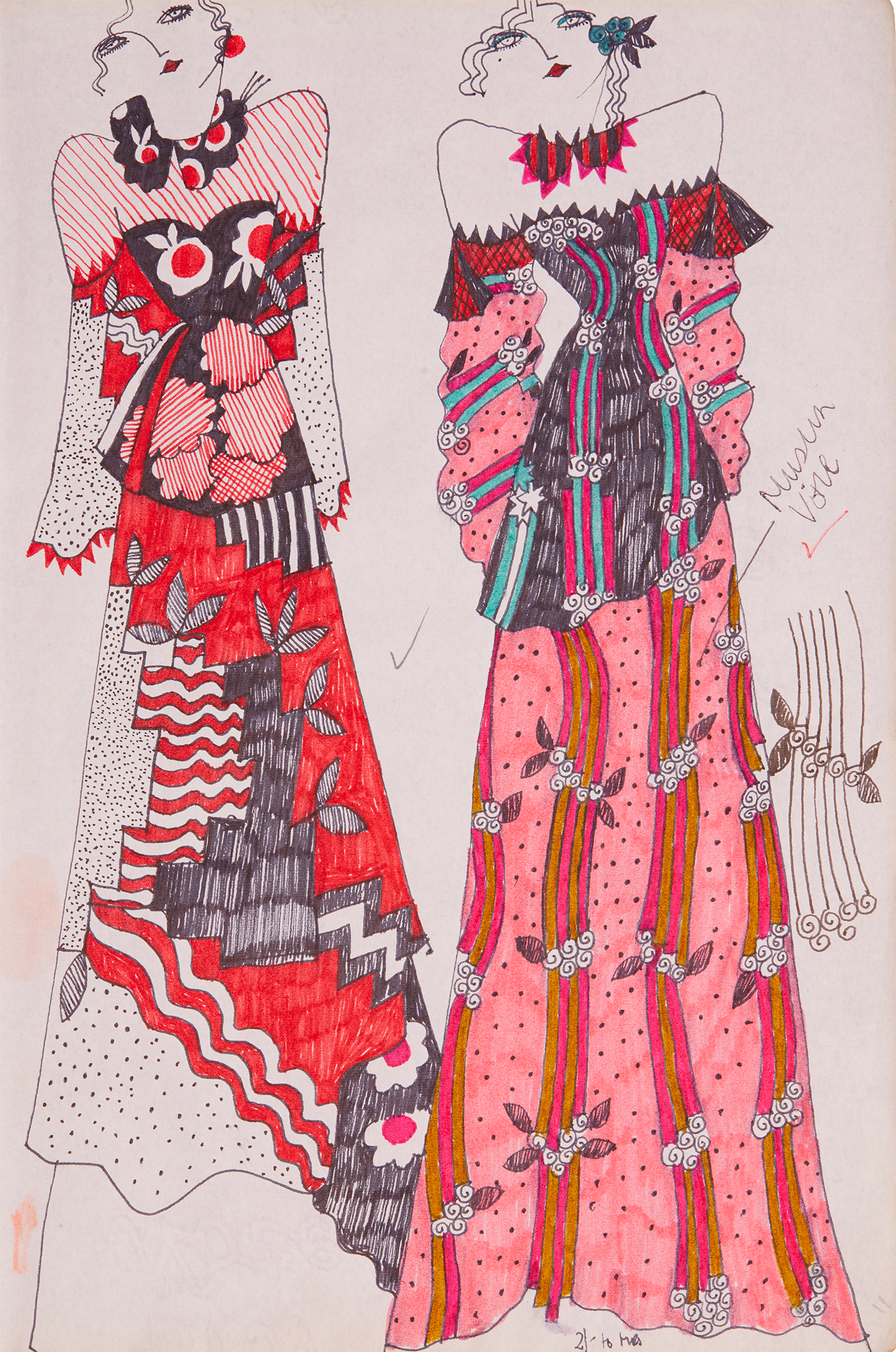
Celia Birtwell Sketchbook with abstract and floral designs for dresses,1970 Pen and ink on paper Collection Celia Birtwell
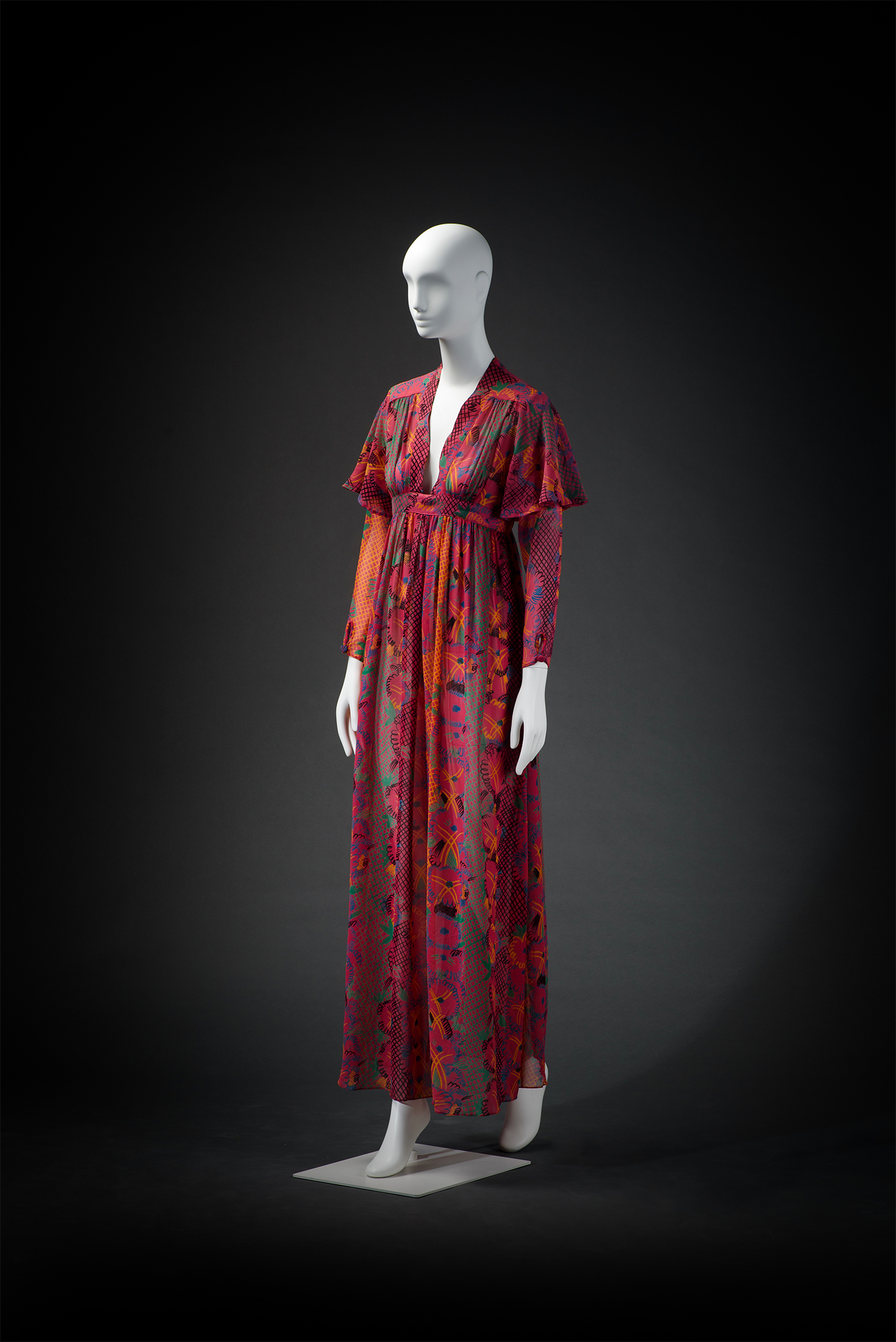
Ossie Clark, ca. 1973, Textile designer Celia Birtwell Label: Ossie Clark for Radley
Print by Celia Birtwell, Collection Massimo Cantini Parrini
However, two brilliant minds with varying expertise in the artistic process managed to overcome the obstacles and attain an innovative outcome. It was an avant-garde choice but also complicated to manage.
For years they cooperated and established a special relationship until their balance became unstable: after the 1974 Autumn-Winter collection, Ossie Clark and Celia Birtwell went down different paths. Clark was active with his own company under the brand name Ossie Clark Ltd., until he died in 1996, murdered by his young lover; Birtwell ventured into interior design, creating home collections and partnering with fashion brands, revealing a consistent aesthetic approach that has stood the test of time.
Martina Biagianti
Fashion Management, Digital Communication & Media, 1st year, Milan
This article was inspired by a visit to the exhibition “Mr & Mrs Clark. Ossie Clark and Celia Birtwell. Fashion and Prints 1965 - 1974”, curated by Federico Poletti, at the Sozzani Foundation in Milan, in the early months of 2023. The first exhibition in Italy dedicated to Ossie Clark and Celia Birtwell was a project by Museo del Tessuto di Prato and Fondazione Sozzani in collaboration with Collezione Massimo Cantini Parrini and with loans by Celia Birtwell and Lauren Lepire.



